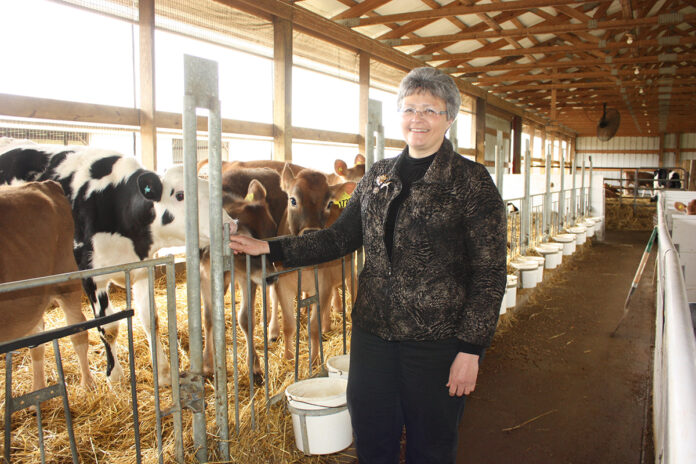
“What a cool job Dan Cowdrey has!” I thought as I left the Highland County Ag Extension Agent’s office in 1982.
He had reviewed the ration I calculated for the herd of 60 Holsteins I had just started to manage. Four years later, I walked into the Columbiana County Extension office on Saltwell Road in Lisbon to start my own really cool job as the agriculture agent. This job was a gift in many ways, as it also brought Steve and I close to his family in Stark County and an opportunity to begin our own dairy farm.
At that time Ohio’s dairy landscape was crowded with dairy farms milking a few cows to 100 or so cows. In April of 1986 there were 388,000 dairy cows in Ohio that produced 421 million pounds of milk that month. Many cows were still housed in bank barns, some with attached sheds or in shorter, solid-sidewalled pole barns.
Time went on
We learned more about managing cows and farms. Milk markets changed, and herd sizes grew. One of the best things that happened to many of those bank and pole barns was the older generation finally going on vacation. During those vacations more than one of those barns “lost” siding as the benefits of ventilation and unimpeded airflow at cow level were better understood. The younger generation got tired of waiting for the older folks to jump on board and just opened things up.
Change
If I had to choose two words to describe the dairy industry over the past 36 years, “constant change” would be my pick. Many changes were relatively easy and made sense, some were hard to see the whys or the benefits, especially when we had little control over the change and had to adapt or figure out what opportunities might materialize.
A few changes that pop to mind:
Tiestalls to freestalls;
Upright silos to bags to bunkers;
Small square to large square bales;
“Mixing” in conveyors to stationary then portable feed mixers;
Whatever light there was to added and controlled lighting;
No ventilation to open sidewalls, ridge vents, fans and sprinklers;
Variable speed milk compressors — saved the hearing of many;
Milking robots from clunky to practical;
Manure: waste to nutrient;
Calf management from surviving to thriving;
Age at first calving from 30 to 36 months to 24 and under;
Raise every heifer to beef crossbreeding and selecting heifers for replacement;
Milk prices set by local markets to international influences;
Many milk cooperatives, processors, buyers to few;
Growth of animal welfare, environmental impact and consumer input issues;
Taking a milk price to pricing and risk management options;
No computers to computers and apps for farm and animal management;
Many input sources consolidating into fewer with less competition;
Continuously increasing herd sizes.
The consolidation of Ohio’s dairy industry has been hard. Hard for the families that no longer milk cows, hard for the many small ag businesses that no longer support the dairy industry. Both of these losses are felt in communities across the state.
Milk pricing is a mess and frustrating for all involved. Can it be fixed? It can certainly be changed with that goal in mind, but it will be a long and tiring process with neither producers nor processors completely satisfied in the end. Compromise will be needed on both sides, but an understandable, transparent system will go a long way toward building a system that could work for the next 30 years.
In April of this year, Ohio had 250,000 cows that produced 460 million pounds of milk; 35% fewer cows produced 9% more milk than in 1986. Advancements in genetics, management and markets drove that change.
The beauty of Ohio’s dairy industry is that there is not a single recipe for success in the midst of this ongoing change. While the trend will continue toward fewer and larger farms, size does not guarantee success. Good cows, good management, good people, good finances, planning and a willingness to accept and adapt to changes we cannot control are all important factors.
It has been an honor and a privilege to work with farm families and industry professionals across Ohio, being welcomed onto farms and into homes, barns and classrooms. A next generation of extension educators and specialists are ready to walk with Ohio’s dairy industry into the future. To work together on issues and opportunities. To learn from each other. Wishing you all the best in the future and looking forward to seeing how our industry grows and changes in the next 36 years.












